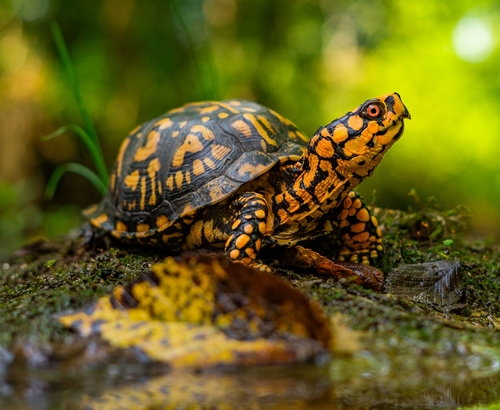
Eastern Box Turtle
The Eastern Box Turtle, Terrapene carolina, is a terrestrial marvel with a hinged shell for complete enclosure. Nestled in the forests and grasslands of eastern U.S., it demonstrates remarkable adaptability and longevity, playing a crucial role in controlling insect populations and dispersing seeds.
25-40 years
Lifespan
227.0 - 907.0 g
Weight
Length: 13 - 15 cm
Size
Yellow, Black, Dark, Brown, Orange
Color
5 years
Age of Sexual Maturity
0.25 mph
Top Speed
Vulnerable
Conservation Status
Decreasing
Population Trend
Distribution Range of the Eastern Box Turtle
Terrapene carolina, commonly known as the Eastern Box Turtle, is native to the eastern United States. Its geographical distribution is expansive, covering regions from the Great Lakes and New England states in the north, down to the Gulf of Mexico in the south, and extending west to parts of Texas, Kansas, and Oklahoma.
Eastern Box Turtle's Habitat
Environmental Conditions
Eastern Box Turtles typically inhabit deciduous forests, mixed forests, and occasionally open grassland areas. They are often found in areas with a moist forest floor that includes leaf litter, logs, and underbrush that provide cover and maintain humidity levels. The climate in these habitats ranges from humid continental in the northern parts of their range to humid subtropical in southern regions.
Ecological Niche
Terrapene carolina is primarily terrestrial, thriving in environments that offer abundant cover and food sources such as insects, worms, berries, and other plant matter. They play a role as both predator and prey within their ecosystem, contributing to the biological control of insects and seed dispersal. The species is known for its ability to adapt to various microhabitats within its range, with some subspecies showing regional adaptations such as differences in shell morphology or activity patterns.
Copyright @ Nature Style Limited. All Rights Reserved.
 English
English